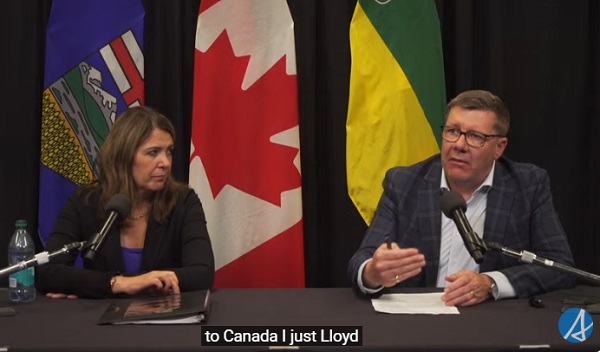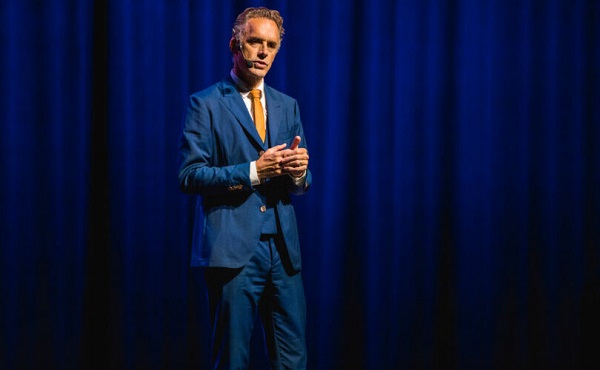Business
Time to finally privatize Canada Post

From the Fraser Institute
In the 10 years following privatization, prices for stamps and other postal services fell by 11 per cent in Austria, 15 per cent in the Netherlands and 17 per cent in Germany (adjusted for inflation). All these countries now have lower postal prices than the European average.
Canada Post wants to increase the price of a stamp by 25 cents to $1.24 to keep up with inflation and rising costs. But Canada Post has often relied on this reasoning for previous price increases since it stopped being a government department and became a Crown corporation in 1981. Since then, it’s jacked up prices every time it’s had “financial difficulties.”
The source of these difficulties has changed over time. It used to be the modernization of infrastructure, then the problems of pensions, then the rise of the Internet. The answer is, however, always the same. Prices must increase. Indeed, since 1981 stamp prices have increased 98 per cent (after adjusting for inflation). In other words, the price for stamps have increased far beyond the rate of inflation.
Why does Canada Post keep getting away with this?
Because it has a monopoly over most of the letter market in Canada. And while it competes with private companies (UPS, for example) in the parcel market, Canada Post can borrow money at much lower costs than its rivals because it is a Crown corporation ultimately backed by taxpayers. That’s a huge advantage.
Normally, a company facing losses and declining demand would innovate and reduce costs. Otherwise, it would likely be bought out by competitors or go bankrupt. However, due to its monopoly over most of the letter market, Canada Post lacks this incentive. In can simply pass the burden onto consumers by raising prices, which is exactly what it has done since the 1980s. And as a Crown corporation, it cannot be purchased by another company without express approval from Ottawa.
So, what’s the solution?
In Europe, due to a directive from the European Commission, all letters regardless of weight have been open to competition since 2013. The directive does not mandate the privatization of state-owned postal companies; it simply ends postal monopolies. Combined with local liberalization efforts before 2013, this directive has forced state-owned postal service providers to better control costs because they cannot turn to taxpayers (for subsidies) or consumers (by raising prices) to bail them out.
Some countries such as the Netherlands, Austria and Germany went further and privatized their postal operators. With privatization, the discipline of competition is combined with the discipline imposed by shareholders seeking to maximize profits and increase sales.
In the 10 years following privatization, prices for stamps and other postal services fell by 11 per cent in Austria, 15 per cent in the Netherlands and 17 per cent in Germany (adjusted for inflation). All these countries now have lower postal prices than the European average.
Predictably, postal service providers in these countries found new methods of organizing their activities, tying multiple services together to generate economies of scale, and moved fast in adopting new information and logistical technologies. Due to the incentives of competition, providers focused their efforts on controlling costs—a focus Canada Post will never achieve as long as it’s a Crown corporation with a monopoly.
If approved by federal regulators, Canada Post’s latest price increase would go into effect in January. Policymakers in Ottawa should finally put postal liberalization and privatization on the table. Otherwise, it’s only a matter of time before a new problem emerges, which Canada Post will use to justify another price increase.
Author:
Business
RFK Jr. planning new restrictions on drug advertising: report

Quick Hit:
The Trump administration is reportedly weighing new restrictions on pharmaceutical ads—an effort long backed by Health Secretary Robert F. Kennedy Jr. Proposals include stricter disclosure rules and ending tax breaks.
Key Details:
-
Two key proposals under review: requiring longer side-effect disclosures in TV ads and removing pharma’s tax deduction for ad spending.
-
In 2024, drug companies spent $10.8 billion on direct-to-consumer ads, with AbbVie and Pfizer among the top spenders.
-
RFK Jr. and HHS officials say the goal is to restore “rigorous oversight” over drug promotions, though no final decision has been made.
Diving Deeper:
According to a Bloomberg report, the Trump administration is advancing plans to rein in direct-to-consumer pharmaceutical advertising—a practice legal only in the U.S. and New Zealand. Rather than banning the ads outright, which could lead to lawsuits, officials are eyeing legal and financial hurdles to limit their spread. These include mandating extended disclosures of side effects and ending tax deductions for ad spending—two measures that could severely limit ad volume, especially on TV.
Health and Human Services Secretary Robert F. Kennedy Jr., who has long called for tougher restrictions on drug marketing, is closely aligned with the effort. “We are exploring ways to restore more rigorous oversight and improve the quality of information presented to American consumers,” said HHS spokesman Andrew Nixon in a written statement. Kennedy himself told Sen. Josh Hawley in May that an announcement on tax policy changes could come “within the next few weeks.”
The ad market at stake is enormous. Drugmakers spent $10.8 billion last year promoting treatments directly to consumers, per data from MediaRadar. AbbVie led the pack, shelling out $2 billion—largely to market its anti-inflammatory drugs Skyrizi and Rinvoq, which alone earned the company over $5 billion in Q1 of 2025.
AbbVie’s chief commercial officer Jeff Stewart admitted during a May conference that new restrictions could force the company to “pivot,” possibly by shifting marketing toward disease awareness campaigns or digital platforms.
Pharma’s deep roots in broadcast advertising—making up 59% of its ad spend in 2024—suggest the impact could be dramatic. That shift would mark a reversal of policy changes made in 1997, when the FDA relaxed requirements for side-effect disclosures, opening the floodgates for modern TV drug commercials.
Supporters of stricter oversight argue that U.S. drug consumption is inflated because of these ads, while critics warn of economic consequences. Jim Potter of the Coalition for Healthcare Communication noted that reinstating tougher ad rules could make broadcast placements “impractical.” Harvard professor Meredith Rosenthal agreed, adding that while ads sometimes encourage patients to seek care, they can also push costly brand-name drugs over generics.
Beyond disclosure rules, the administration is considering changes to the tax code—specifically eliminating the industry’s ability to write off advertising as a business expense. This idea was floated during talks over Trump’s original tax reform but was ultimately dropped from the final bill.
Business
Canada’s critical minerals are key to negotiating with Trump

From Resource Works
The United States wants to break its reliance on China for minerals, giving Canada a distinct advantage.
Trade issues were top of mind when United States President Donald Trump landed in Kananaskis, Alberta, for the G7 Summit. As he was met by Prime Minister Mark Carney, Canada’s vast supply of critical minerals loomed large over a potential trade deal between North America’s two largest countries.
Although Trump’s appearance at the G7 Summit was cut short by the outbreak of open hostilities between Iran and Israel, the occasion still marked a turning point in commercial and economic relations between Canada and the U.S. Whether they worsen or improve remains to be seen, but given Trump’s strategy of breaking American dependence on China for critical minerals, Canada is in a favourable position.
Despite the president’s early exit, he and Prime Minister Carney signed an accord that pledged to strike a Canada-US trade deal within 30 days.
Canada’s minerals are a natural advantage during trade talks due to the rise in worldwide demand for them. Without the minerals that Canada can produce and export, it is impossible to power modern industries like defence, renewable energy, and electric vehicles (EV).
Nickel, gallium, germanium, cobalt, graphite, and tungsten can all be found in Canada, and the U.S. will need them to maintain its leadership in the fields of technology and economics.
The fallout from Trump’s tough talk on tariff policy and his musings about annexing Canada have only increased the importance of mineral security. The president’s plan extends beyond the economy and is vital for his strategy of protecting American geopolitical interests.
Currently, the U.S. remains dependent on China for rare earth minerals, and this is a major handicap due to their rivalry with Beijing. Canada has been named as a key partner and ally in addressing that strategic gap.
Canada currently holds 34 critical minerals, offering a crucial potential advantage to the U.S. and a strategic alternative to the near-monopoly currently held by the Chinese. The Ring of Fire, a vast region of northern Ontario, is a treasure trove of critical minerals and has long been discussed as a future powerhouse of Canadian mining.
Ontario’s provincial government is spearheading the region’s development and is moving fast with legislation intended to speed up and streamline that process. In Ottawa, there is agreement between the Liberal government and Conservative opposition that the Ring of Fire needs to be developed to bolster the Canadian economy and national trade strategies.
Whether Canada comes away from the negotiations with the US in a stronger or weaker place will depend on the federal government’s willingness to make hard choices. One of those will be ramping up development, which can just as easily excite local communities as it can upset them.
One of the great drags on the Canadian economy over the past decade has been the inability to finish projects in a timely manner, especially in the natural resource sector. There was no good reason for the Trans Mountain pipeline expansion to take over a decade to complete, and for new mines to still take nearly twice that amount of time to be completed.
Canada is already an energy powerhouse and can very easily turn itself into a superpower in that sector. With that should come the ambition to unlock our mineral potential to complement that. Whether it be energy, water, uranium, or minerals, Canada has everything it needs to become the democratic world’s supplier of choice in the modern economy.
Given that world trade is in flux and its future is uncertain, it is better for Canada to enter that future from a place of strength, not weakness. There is no other choice.
-

 Alberta2 days ago
Alberta2 days agoAlberta health care blockbuster: Province eliminating AHS Health Zones in favour of local decision-making!
-

 Alberta1 day ago
Alberta1 day agoCentral Alberta MP resigns to give Conservative leader Pierre Poilievre a chance to regain a seat in Parliament
-

 Alberta1 day ago
Alberta1 day agoCalls for a new pipeline to the coast are only getting louder
-

 conflict2 days ago
conflict2 days agoTrump: ‘We’ have control over Iranian airspace; know where Khomeini is hiding
-

 Alberta1 day ago
Alberta1 day agoAlberta pro-life group says health officials admit many babies are left to die after failed abortions
-

 Daily Caller1 day ago
Daily Caller1 day ago‘Not Held Hostage Anymore’: Economist Explains How America Benefits If Trump Gets Oil And Gas Expansion
-

 Alberta17 hours ago
Alberta17 hours agoUnified message for Ottawa: Premier Danielle Smith and Premier Scott Moe call for change to federal policies
-

 Censorship Industrial Complex20 hours ago
Censorship Industrial Complex20 hours agoJordan Peterson reveals DEI ‘expert’ serving as his ‘re-education coach’ for opposing LGBT agenda


